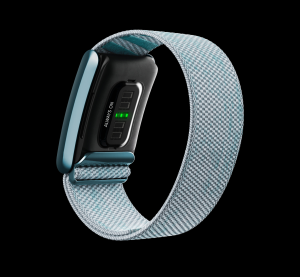Introduction
Smartwatches have revolutionized the way we interact with technology, offering a blend of convenience, connectivity, and health tracking in a compact form. At the heart of these versatile devices lies the lithium battery, a critical component that powers their myriad functions. This article explores the role of lithium batteries in smartwatches, examining their advantages, challenges, and the innovations that are shaping the future of wearable technology.

Advantages of Lithium Batteries in Smartwatches
High Energy Density
Lithium batteries are renowned for their high energy density, which allows smartwatches to maintain a slim profile while delivering substantial power. This high energy density ensures that smartwatches can operate for extended periods on a single charge, accommodating various functions such as fitness tracking, heart rate monitoring, GPS navigation, and communication.
Long Battery Life
The longevity of lithium batteries is a significant advantage for smartwatches. Users expect their devices to last through the day, and sometimes even multiple days, without needing a recharge. Lithium batteries provide the necessary endurance, balancing the power requirements of advanced features with the need for compactness.
Fast Charging
Fast charging capabilities are another key benefit of lithium batteries in smartwatches. Given the high demand for continuous connectivity and functionality, the ability to quickly recharge the device is essential. Lithium batteries support rapid charging, allowing users to regain hours of use with just a few minutes of charging.
Lightweight
The lightweight nature of lithium batteries contributes to the overall comfort and wearability of smartwatches. Since these devices are worn on the wrist, minimizing weight is crucial to ensure they remain comfortable and unobtrusive during daily activities.
Challenges of Lithium Batteries in Smartwatches
Battery Degradation
Over time, lithium batteries experience degradation, which can reduce their capacity and overall lifespan. This degradation is influenced by various factors, including charging cycles, temperature exposure, and usage patterns. In smartwatches, battery degradation can lead to shorter intervals between charges and a decline in performance.
Safety Concerns
Safety is a critical consideration for lithium batteries, particularly in wearable devices that are in constant contact with the body. Risks such as overheating, swelling, and in rare cases, battery fires, must be meticulously managed. Manufacturers incorporate advanced safety features and rigorous testing to mitigate these risks and ensure user safety.
Size Constraints
While lithium batteries are compact, the continuous push for thinner and more feature-rich smartwatches imposes stringent size constraints. Balancing battery capacity with the need for a sleek design is a persistent challenge. Innovations in battery technology aim to address this by enhancing energy density without increasing size.
Innovations in Lithium Battery Technology for Smartwatches
Solid-State Batteries
Solid-state batteries represent a promising advancement in lithium battery technology. Unlike traditional lithium-ion batteries that use liquid electrolytes, solid-state batteries employ solid electrolytes. This change can potentially increase energy density, enhance safety, and extend battery life, making them ideal for compact devices like smartwatches.
Flexible Batteries
Flexible lithium batteries are another innovative development, designed to accommodate the unique form factors of wearable devices. These batteries can bend and flex without compromising performance, offering new possibilities for smartwatch design and comfort. Flexible batteries enable the creation of more ergonomic and aesthetically pleasing devices.
Improved Battery Management Systems (BMS)
Advanced Battery Management Systems (BMS) are critical for optimizing the performance and lifespan of lithium batteries in smartwatches. Modern BMS technologies monitor various parameters such as charge level, temperature, and usage patterns, ensuring efficient energy use and enhancing safety. By intelligently managing power distribution, BMS can extend battery life and provide a more reliable user experience.
Energy Harvesting
Energy harvesting technologies are being explored as a means to complement lithium batteries in smartwatches. These technologies capture energy from the environment, such as solar power or kinetic energy from motion, to provide supplementary power. Integrating energy harvesting with lithium batteries can reduce reliance on frequent charging and extend the operational time of smartwatches.
Future Prospects
Enhanced Energy Density
Ongoing research aims to further enhance the energy density of lithium batteries, allowing smartwatches to offer even more features without sacrificing battery life. Advances in materials science and battery chemistry are expected to yield significant improvements in energy storage capabilities.
Sustainable Battery Materials
The environmental impact of battery production and disposal is an important consideration. Future developments in lithium battery technology will likely focus on using more sustainable and eco-friendly materials. Efforts to improve recycling processes and reduce the reliance on rare and hazardous materials are crucial for the sustainability of battery technology.
Integration with AI and IoT
As smartwatches become more integrated with artificial intelligence (AI) and the Internet of Things (IoT), the demand for efficient and reliable power sources will increase. Lithium batteries will continue to evolve to meet these demands, providing the necessary power for advanced AI-driven features and seamless IoT connectivity.
Conclusion
Lithium batteries play a pivotal role in the functionality and success of smartwatches, providing the power needed to support a wide range of features in a compact and lightweight form. The high energy density, long battery life, fast charging capabilities, and lightweight nature of lithium batteries make them the ideal choice for wearable technology. However, challenges such as battery degradation, safety concerns, and size constraints require ongoing innovation and improvement.
The future of lithium batteries in smartwatches looks promising, with advancements in solid-state and flexible batteries, improved battery management systems, and the integration of energy harvesting technologies. These innovations will continue to enhance the performance, safety, and sustainability of lithium batteries, ensuring that smartwatches remain a vital and evolving part of our technological landscape. As research and development progress, lithium batteries will undoubtedly continue to drive the evolution of smartwatches, enabling them to offer even more advanced features and greater convenience to users worldwide.

